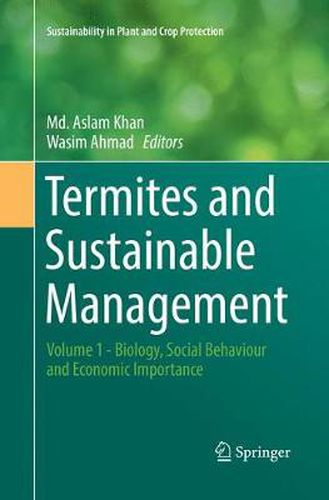Readings Newsletter
Become a Readings Member to make your shopping experience even easier.
Sign in or sign up for free!
You’re not far away from qualifying for FREE standard shipping within Australia
You’ve qualified for FREE standard shipping within Australia
The cart is loading…






This Volume comprises 12 chapters in an attempt to bring available information on biology, social behavour and economic importance of termites. Chapters in this book dealing with termites identification provide a review on most updated information of their systematics. Ecologically, termites interact with living and non-living surroundings and deliver a wide range of behaviors. In a separate chapter termites ecology is examined and explored. Termites depend on their gut microbes for digestion of complex polysaccharides of wood into simpler molecules. Information provided on termite gut microbiome and lignocellulose degradation constitutes an important contribution. Termite biology and social behaviour have been addressed comprehensively. Trail pheromones are responsible for the orientation and recruitment of nestmates to the food sources. Once arriving at a potential food source, termites assess its quality using a different set of cues. A separate chapter on trail pheromones, cues used during foraging and food assessment, with preferences for foraging sites, contributes a wealth of information. Emphasis has been given on reviewing ecological benefits of termites in other chapters. The information with respect to termite species as an edible insect and the overall role it plays in food and nutrition security in Africa is quite informative. A separate chapter dealing with importance of termites and termitaria in mineral exploration constitutes a significant step in addressing the economic importance of this insect group.
$9.00 standard shipping within Australia
FREE standard shipping within Australia for orders over $100.00
Express & International shipping calculated at checkout
This Volume comprises 12 chapters in an attempt to bring available information on biology, social behavour and economic importance of termites. Chapters in this book dealing with termites identification provide a review on most updated information of their systematics. Ecologically, termites interact with living and non-living surroundings and deliver a wide range of behaviors. In a separate chapter termites ecology is examined and explored. Termites depend on their gut microbes for digestion of complex polysaccharides of wood into simpler molecules. Information provided on termite gut microbiome and lignocellulose degradation constitutes an important contribution. Termite biology and social behaviour have been addressed comprehensively. Trail pheromones are responsible for the orientation and recruitment of nestmates to the food sources. Once arriving at a potential food source, termites assess its quality using a different set of cues. A separate chapter on trail pheromones, cues used during foraging and food assessment, with preferences for foraging sites, contributes a wealth of information. Emphasis has been given on reviewing ecological benefits of termites in other chapters. The information with respect to termite species as an edible insect and the overall role it plays in food and nutrition security in Africa is quite informative. A separate chapter dealing with importance of termites and termitaria in mineral exploration constitutes a significant step in addressing the economic importance of this insect group.